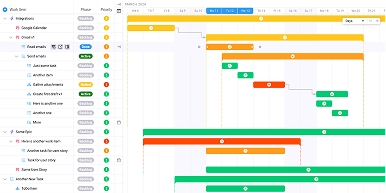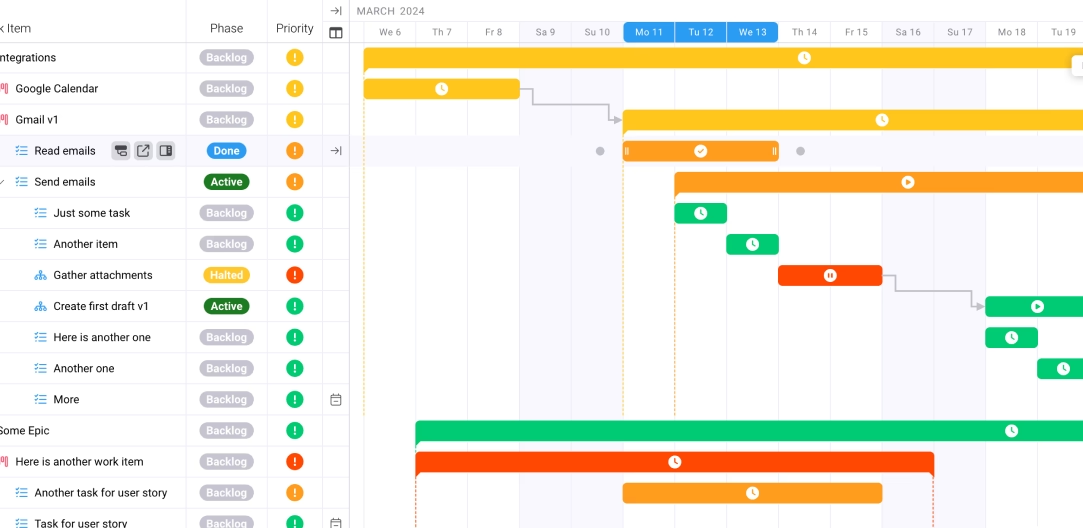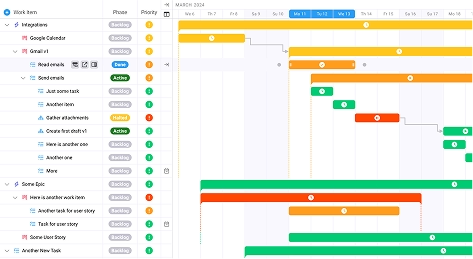
From Startup to Scale: Proven Agency Growth Strategies for 10x Revenue
Key takeaways:
- Systematic Growth Framework: 10x revenue requires methodical implementation of scalable systems rather than random growth tactics
- Client Retention Foundation: Sustainable scaling depends on mastering retention before pursuing aggressive acquisition strategies
- Operational Excellence: High-performing agencies maintain 65-80% utilization rates and 50-60% delivery margins through optimized processes
- Strategic Resource Planning: Successful scaling requires proactive capacity planning and specialized talent acquisition aligned with growth projections
What if achieving 10x revenue growth wasn’t just a pipe dream but a strategic inevitability? While 74% of agencies experienced revenue growth in the past year, the harsh reality is that most agencies struggle to break through the growth ceiling that separates modest success from exponential scaling. The difference between agencies that achieve sustainable 10x growth and those that plateau lies not in luck or timing, but in implementing proven agency growth strategies that transform operational efficiency, client relationships, and revenue generation. From startup to scale isn’t just about working harder—it’s about building systematically scalable frameworks that compound your impact year over year.
The Current Challenge – What’s Broken in Traditional Agency Scaling
Most agencies approach growth with a fundamentally flawed assumption: that scaling simply means doing more of what already works. This linear thinking creates the exact bottlenecks that prevent breakthrough growth. U.S. advertising and marketing agencies saw 9.9% revenue growth in 2022, which represents healthy but incremental progress—far from the exponential growth required for true market leadership.
The traditional agency scaling model suffers from three critical flaws. First, agencies prioritize client acquisition over retention, despite the fact that retaining clients costs 5-7 times less than acquiring new ones. This backwards approach creates a “leaky bucket” effect where agencies constantly chase new business to replace churning clients, never building the stable foundation necessary for sustainable growth.
Second, most agencies lack systematic operational frameworks. They rely on heroic individual efforts rather than scalable processes, creating dependencies that become growth inhibitors rather than accelerators. When key team members become bottlenecks, the entire scaling effort stalls.
Third, agencies typically underestimate the infrastructure investment required for exponential growth. They attempt to scale on startup-level systems and processes, then wonder why quality degrades and client satisfaction plummets as volume increases. Average profit margin for marketing agencies is around 15-20% in 2024, but agencies targeting 10x growth need significantly higher margins to fund the infrastructure investments that sustainable scaling demands.
The market data reveals an important insight: large agencies (50+ employees) tend to grow 31% faster than average. This isn’t because larger agencies have inherent advantages—it’s because they’ve implemented the systematic approaches that enable accelerated growth. The question becomes: how can smaller agencies implement these same systematic approaches without waiting until they reach 50+ employees?
The Strategic Framework – Building Your 10x Growth Architecture
Achieving 10x revenue growth requires a fundamentally different strategic framework than traditional agency development. This isn’t about incremental improvements—it’s about building scalable systems that compound your growth exponentially. The framework consists of four interconnected pillars that work synergistically to create breakthrough results.
The Revenue Multiplication Matrix forms the foundation of 10x thinking. Instead of viewing growth as a linear progression from current revenue to 10x revenue, successful agencies identify multiple leverage points that multiply simultaneously. These include client lifetime value expansion, service offering amplification, operational efficiency gains, and market positioning elevation. When these factors improve concurrently, they create compound growth effects that make 10x targets achievable within 3-5 year timeframes.
Systems-First Architecture distinguishes scaling agencies from growing agencies. Growing agencies add resources to handle increased volume. Scaling agencies build systems that handle increased volume without proportional resource increases. This includes standardized delivery methodologies, automated client communication sequences, templated project frameworks, and systematized quality assurance processes. The goal is creating predictable outcomes regardless of which team members execute the work.
Strategic Capacity Planning ensures growth doesn’t outpace your ability to deliver excellence. This involves building your organizational chart 12-18 months ahead of current needs, identifying skill gaps before they become bottlenecks, and creating development pathways for existing team members to grow into future roles. Companies working with CEO coaching achieved 25.9% average revenue CAGR, demonstrating the value of strategic planning support during scaling phases.
Value-Based Positioning Evolution transforms your agency from a service provider to a strategic partner. This requires developing proprietary methodologies, building industry-specific expertise, and creating measurable business outcomes that justify premium pricing. Agencies that successfully scale 10x typically command 3-5x higher rates than commodity providers in their space.
The framework implementation follows a specific sequence. First, audit your current operations to identify bottlenecks and inefficiencies. Second, design scalable systems that eliminate those bottlenecks. Third, implement those systems with rigorous testing and optimization. Fourth, scale systematically while maintaining quality standards. Finally, optimize and refine based on performance data.
This approach contrasts sharply with traditional growth strategies that focus primarily on acquisition tactics. While client acquisition remains important, the 10x framework prioritizes building the operational foundation that can handle exponential growth sustainably. Agencies that skip this foundation-building phase typically hit growth ceilings around 2-3x their starting revenue, then plateau as operational complexity overwhelms their capacity to deliver consistent results.
Implementation Tactics – Five Core Strategies for Exponential Growth
Strategy 1: Master Client Retention Before Acquisition Amplification
The foundation of 10x growth lies in building an unshakeable client base that provides predictable recurring revenue. Retainer-oriented agencies should be concerned if client turnover exceeds 20%, but agencies targeting exponential growth should aim for retention rates of 90% or higher. This requires implementing systematic client retention strategies for sustainable agency growth that transform one-time projects into long-term partnerships.
The retention-first approach involves three key components. First, implement proactive client success management that identifies and addresses issues before they become reasons for departure. Second, create value expansion pathways that naturally grow accounts over time through additional services, increased scope, or strategic consulting. Third, develop client communication systems that maintain engagement and demonstrate ongoing value between formal deliverables.
Strategy 2: Build Revenue-Generating Operational Systems
High-performing agencies achieve production team utilization should hit 65-80% annually for healthy margins through systematic operational excellence. This requires implementing comprehensive resource planning optimization for scalable operations that maximizes billable efficiency while maintaining service quality.
Operational excellence starts with standardizing your delivery processes. Create templates, checklists, and workflows that ensure consistent outcomes regardless of which team members execute the work. Implement robust project management systems that provide real-time visibility into project status, resource allocation, and profitability metrics. Develop quality assurance processes that catch and correct issues before they reach clients.
Strategy 3: Implement Strategic Client Acquisition Systems
While retention provides the foundation, systematic acquisition fuels exponential growth. Nearly half of marketing agencies say referrals are the best way to land new clients, but relying solely on referrals limits growth velocity. Agencies targeting 10x revenue need diversified acquisition systems that include referral amplification, strategic partnerships, content marketing, and direct outreach.
The key is implementing strategic client acquisition methods for agency growth that focus on quality over quantity. Rather than pursuing every possible client, develop ideal client profiles that specify the characteristics of accounts most likely to generate substantial long-term value. Build acquisition systems specifically designed to attract and convert these high-value prospects.
Strategy 4: Optimize Financial Performance Through Margin Excellence
Best-performing digital marketing agencies achieve 50-60% delivery margins by systematically optimizing their financial performance. This involves implementing sophisticated billing systems that track profitability at the project and client level, enabling data-driven decisions about pricing, scope, and resource allocation.
Financial optimization requires three key elements. First, develop pricing strategies that reflect the true value you deliver rather than simply covering costs plus margin. Second, implement project scoping methodologies that accurately estimate resource requirements and prevent scope creep. Third, create financial monitoring systems that provide real-time visibility into profitability metrics and enable quick corrective action when projects drift off-target.
Strategy 5: Scale Through Strategic Technology Integration
Technology serves as the great equalizer that allows smaller agencies to compete with larger firms by automating routine tasks and amplifying human capabilities. Implement comprehensive CRM systems that track every client interaction and opportunity. Deploy time tracking solutions that provide accurate data for billing and profitability analysis. Utilize client portals that enhance communication and reduce administrative overhead.
The strategic approach to technology integration involves selecting tools that integrate seamlessly rather than creating operational silos. Choose platforms that grow with your agency and can handle increased complexity as you scale. Prioritize tools that provide comprehensive data insights rather than simply automating individual tasks.
Measuring Success – KPIs and Metrics That Matter for 10x Growth
Achieving 10x revenue growth requires tracking metrics that provide leading indicators of exponential growth rather than lagging indicators of past performance. Traditional agency metrics like monthly recurring revenue and client count remain important, but they don’t capture the underlying health factors that enable sustainable scaling.
Growth Velocity Metrics measure how quickly your agency is building momentum toward 10x targets. Track monthly growth rates across multiple dimensions: new client acquisition, existing client expansion, average deal size increases, and operational efficiency improvements. Successful agencies typically see acceleration in these metrics 6-12 months before major revenue breakthroughs become visible.
Operational Excellence Indicators reveal whether your systems can handle exponential growth. Monitor utilization rates, project profitability variance, client satisfaction scores, and delivery timeline adherence. These metrics indicate whether your operational foundation is strong enough to support rapid scaling without quality degradation.
Financial Health Benchmarks ensure that growth is profitable and sustainable. Track gross margins, net margins, cash flow, and working capital requirements. Agencies targeting 10x growth typically need higher margins than industry averages to fund the infrastructure investments that scaling requires.
Client Relationship Strength provides early warning signals about retention risks and expansion opportunities. Monitor client Net Promoter Scores, account growth rates, contract renewal percentages, and referral generation rates. Strong client relationships serve as the foundation for sustainable exponential growth.
Team Capacity and Development metrics ensure your human resources can support scaling ambitions. Track employee satisfaction, skill development progress, productivity improvements, and leadership pipeline strength. Agencies that achieve 10x growth typically invest heavily in team development well before they need expanded capabilities.
The key to effective measurement lies in creating integrated dashboards that show how these various metrics interact with each other. For example, high utilization rates might indicate efficient operations or dangerous overextension, depending on client satisfaction scores and employee wellbeing metrics. Similarly, rapid client acquisition might signal successful growth or unsustainable operational strain, depending on delivery quality and profitability metrics.
Successful agencies establish both leading and lagging indicator targets for each metric, enabling them to identify trends before they become problems. They also implement regular review cycles that assess progress toward 10x targets and adjust strategies based on performance data rather than intuition or hope.
Future Considerations – Emerging Trends and Next Steps
The agency landscape continues evolving rapidly, with artificial intelligence, changing client expectations, and economic uncertainty creating both opportunities and challenges for agencies pursuing exponential growth. Understanding these trends and positioning your agency accordingly becomes crucial for sustained 10x performance.
Artificial Intelligence Integration represents the most significant operational opportunity in decades. AI tools can automate routine tasks, enhance creative capabilities, and provide sophisticated data analysis that was previously available only to large enterprises. Agencies that strategically integrate AI into their operations can achieve productivity gains that directly support exponential scaling while reducing labor costs.
Specialized Expertise Premium continues growing as clients increasingly seek agencies with deep knowledge in specific industries or capabilities rather than generalist providers. This trend favors agencies that develop proprietary methodologies and demonstrate measurable expertise in targeted areas. The premium for specialized knowledge enables the higher margins necessary to fund exponential growth.
Remote and Hybrid Operations have permanently changed talent acquisition and retention dynamics. Agencies can now access top talent regardless of geographic location, enabling them to build world-class teams without traditional location constraints. However, this also increases competition for top performers and requires sophisticated remote management capabilities.
Client Expectation Evolution demands higher levels of strategic partnership rather than simple service delivery. Clients increasingly expect agencies to provide measurable business outcomes rather than just marketing deliverables. This trend rewards agencies that develop business consulting capabilities alongside their core service offerings.
To capitalize on these trends while pursuing 10x growth, agencies should focus on three key areas. First, invest in technology infrastructure that provides competitive advantages rather than simply automating existing processes. Second, develop specialized expertise that commands premium pricing and creates defensible market positions. Third, build operational systems that can handle remote teams and distributed operations effectively.
The agencies that achieve sustainable 10x growth over the next decade will be those that view these trends as opportunities to differentiate themselves rather than challenges to overcome. They’ll use AI to enhance human capabilities rather than replace them. They’ll leverage remote operations to access global talent pools. They’ll transform client relationships from vendor arrangements to strategic partnerships.
From startup to scale: proven agency growth strategies for 10x revenue require systematic implementation of scalable frameworks rather than hoping for exponential results from linear approaches. The agencies that master retention-first growth, operational excellence, strategic acquisition, financial optimization, and technology integration position themselves to achieve breakthrough results that seemed impossible just a few years earlier. The question isn’t whether 10x growth is possible—it’s whether you’re ready to implement the systematic approaches that make it inevitable.
Frequently Asked Questions
What’s the typical timeline for achieving 10x revenue growth? Most agencies that successfully scale 10x do so within 3-5 years, with the fastest growth typically occurring in years 2-4 after implementing systematic scaling frameworks.
How much should agencies invest in infrastructure before scaling? High-performing agencies typically invest 20-30% of revenue in infrastructure, technology, and team development during active scaling phases.
What’s the biggest mistake agencies make when pursuing exponential growth? The most common error is prioritizing client acquisition over retention, creating a “leaky bucket” that prevents sustainable scaling regardless of marketing effectiveness.
How do smaller agencies compete with larger firms for high-value clients? Smaller agencies win by developing specialized expertise, implementing enterprise-level systems, and providing personalized attention that larger firms can’t match.
What metrics most accurately predict 10x growth potential? Client retention rates above 90%, gross margins above 50%, and month-over-month growth rates above 15% typically indicate strong 10x growth potential.
How important is geographic location for agency scaling? Location becomes less important with remote operations, but market access and talent availability still influence scaling speed and strategy.
Should agencies focus on organic growth or acquisitions for 10x scaling? Most successful 10x agencies rely primarily on organic growth for the first 5x, then consider strategic acquisitions to accelerate the journey to 10x.
What’s the role of partnerships in exponential agency growth? Strategic partnerships can accelerate growth by providing access to new markets, complementary capabilities, and referral sources without internal resource investment.
How do agencies maintain quality while scaling rapidly? Quality maintenance requires systematic processes, comprehensive training programs, and quality assurance frameworks that scale with growth.
What technology investments provide the highest ROI for scaling agencies? Integrated project management platforms, comprehensive CRM systems, and automated reporting tools typically provide the highest returns during scaling phases.









